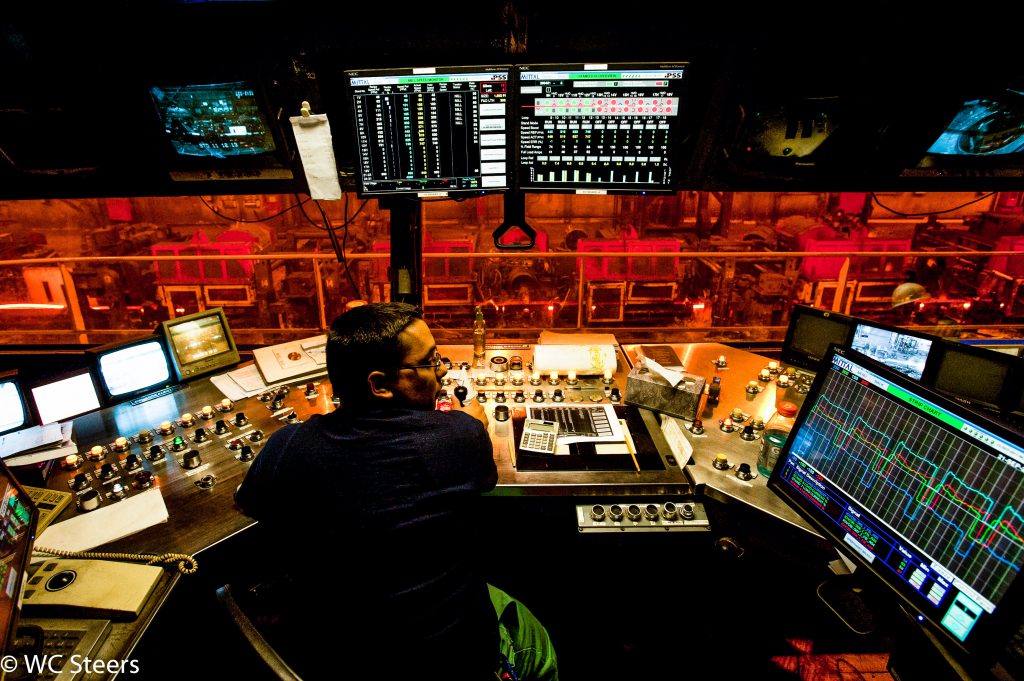
United Steelworkers Local 6787 President Pete Trinidad, who represents 3,000 steelworkers in Northwest Indiana, explains why trade action remains so critical.
The Burns Harbor steel mill, located on Lake Michigan in Northwest Indiana, is considered an essential cog of United States steelmaking facilities. The fully integrated mill, which sits 50 miles southeast of Chicago, manufactures a variety of steel products which serve the automotive, appliance, construction and pipe and tube markets.
Now owned by Cleveland Cliffs, the plant has two blast furnaces and can produce 5 million tons of raw steel annually, the majority of which serves the United States automotive industry.
But just a few years ago, it was all at risk.
The American steel industry was suffering badly with plant closings and employee layoffs because U.S. steelmakers were dealing with an onslaught of dumped steel from foreign countries like China that heavily subsidized their steelmaking industries with government revenue and inexpensive labor.
But Section 232 tariffs put into place in 2018 leveled the playing field for American steelworkers and companies. There’s been a significant rebound, with idled mills reopening and the increased hiring of 3,200 additional steelworkers.
Pete Trinidad Sr. is the president of United Steelworkers Local 6787, which represents more than 3,000 steelworkers at Burns Harbor. He is aware of the importance of being an anchor of American steel mills and what the abundance of work means to his membership.

“We had some layoffs when Covid hit but everybody is back and running strong,” Trinidad said. “This time last year we were laying off, this year we’ve already hired about 125 new people. The big 800 pound gorilla in the steel manufacturing room is China.”
It is the Section 232 tariffs that have served to tame that gorilla and Trinidad says they are essential to the health of the U.S. steel industry.
“Probably the biggest benefit from the 232 tariffs is the reduction of foreign imports, and that was huge for us,” Trinidad said. “It went from 30 to 35 percent down to around 20 percent and that was big because it gave us a little bit of breathing room.
“We just can’t get rid of the 232s. There has to be some kind of protection. We tried the countervailing duties. And now we tried tariffs. What you hear a lot now is the quota system. Quotas where these different companies can only do so much and provide only so many tons of steel into the United States market.
“I like what the president said that his cabinet will have the flexibility to give exemptions that will be very restrictive going forward during this infrastructure thing. It was great news.”
Trinidad, who began working at Burns Harbor as a millwright 27 years ago, is a strong supporter of the 232 tariffs. But he hopes and believes even more can be done to strengthen the U.S. steel industry.
“Even the 232s, there were all kinds of exemptions that were made for that,” he said. “There are countries that are exempt. And then you’ve got China and these other countries that find these open back doors and move and jockey around. They are buying, trading and flopping and the steel never leaves the boat even though it has been sold three times and the next thing you know it is from Turkey, Vietnam or Japan. And it’s coming into our ports. We have to be careful.
“Lifting the 232 tariffs would be devastating because foreign imports will just crash back in. We need to make steel in America at about 80 to 90 percent because if we need to make battleships or tanks, we can just switch over and be able to do that.
“If we are shut down and relying on foreign steel and we go to war with China or Russia, do you think they are going to continue to give us steel?” said the Marine veteran. “We need to be reliable. Thank God the auto industry was able to switch over and make ventilators in a time of need like we just had.”
If Trinidad had one message for President Biden it would be that he is on the right track by keeping the Section 232 tariffs in place.
“The 232s are doing their job but we even need something more permanent,” Trinidad said. “Some type of quota system. We can make the best steel all day long. We are ready to go so let’s do it. We need to band together.
“We can’t do away with the 232 tariffs without having something as good or better in place to protect our markets. We’ve already experienced the race to the bottom, and we don’t want to get into that race again.
“Nobody in the world can compete with our steelmaking capabilities.”
